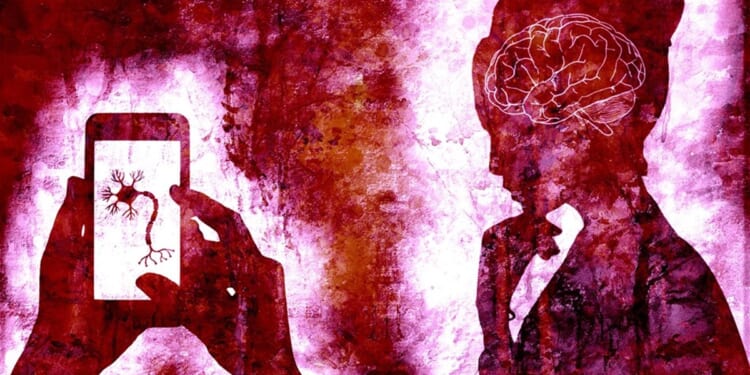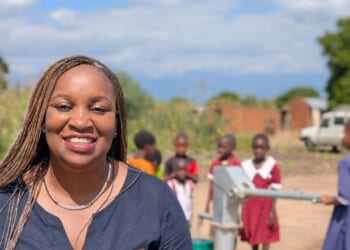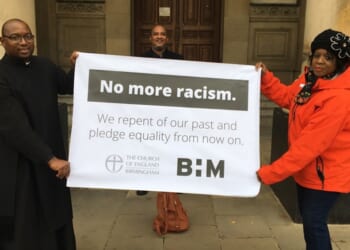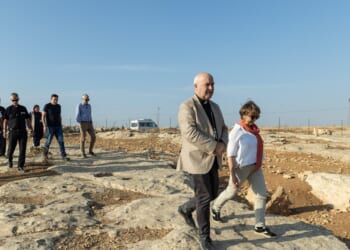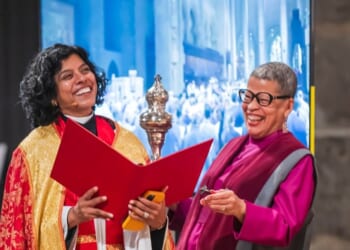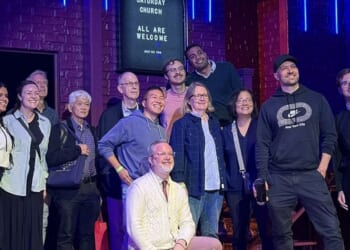PICTURE this: a young man walks into his kitchen. He sits down at the table and picks up an apple from the fruit bowl. He looks at the apple, then bites into it, and chews slowly with a smile. What colour is the apple?
Most people can immediately see the picture, even with those few words, and can describe the colour, shape, and size of the apple — and probably what the man is wearing, and the colour of the office walls. For others of us, myself included, we get a weak image, or no visual imagery at all.
I have aphantasia, a blind “mind’s eye”. When told to imagine my family, I can’t picture them. I can visualise family members by thinking of a particular photo, but even then the image is weak. People with complete aphantasia form about one per cent of the population: it is one end of a spectrum, with vivid imagery called hyperphantasia at the other. It is associated with weaker memory for the details of events, difficulty recognising people, and weak or absent imagination for the other senses.
People with hyperphantasia can imagine visually in colour and three dimensions, and often can manipulate the model; or, when they picture something, they experience moving images, like a film. More people with aphantasia are scientists, more people with hyperphantasia are artists.
THE first time I realised I had no mind’s eye was as a teenager, when a friend hated a film we went to see together because the characters “didn’t look right”. They didn’t look like the detailed pictures the friend had in their head. I was surprised to find that anyone had such complex mental images, and this prompted me to begin to learn about how the brain works, and was one of many factors which led me later to become a psychiatrist.
I often discuss people’s internal mental experiences with them, and find the variation fascinating. One friend, when reading, hears the characters’ voices clearly out loud, and can see them; they also have an audible inner monologue. Another sees a ticker-tape of words when someone is talking. Yet another has face-blindness and cannot recognise even his closest family by sight. A scientist friend has synaesthesia, and sees specific colours when he reads, hears, or thinks about a number; another has dyslexia, and finds that words move around and get jumbled up as they read.
These naturally occurring differences in brain function each give particular strengths and weaknesses. My friend with dyslexia has a total recall of maps. I am sad that I have always had a very poor autobiographical memory, and can’t remember events in any detail: I just know that they happened.
There again, my aphantasia helped me not to burn out during my psychiatric career. Since I didn’t get mental pictures when a patient described their difficult experiences, this helped me not to bring my work home to the same degree as those with a very active mind’s eye. It doesn’t mean I am not caring and empathetic, but it gave me a greater degree of emotional distancing, and so protected my mental health.
GIVEN my challenges with visual and auditory imagery, I never really engaged with Ignatian approaches to spirituality. St Ignatius of Loyola (1491-1556) was a Spanish nobleman who was injured by a cannonball, and, during the enforced stillness of his many months of recovery, had a profound and life-changing experience of God. Following this conversion, he supported other people in using their imagination to encounter the living God, founded the Jesuit order, and wrote the Spiritual Exercises.
I was introduced to Ignatian spirituality through a form of guided meditation, where Luke 8 was read, and people then sat in silent contemplation. Afterwards, the group shared their experiences. Everyone else had seen the sea stirred up by the wind, heard the waves crashing, tasted the salt in the air, felt the boat rocking, and talked with Jesus. I had nothing, and felt a failure; so I avoided this approach as not accessible for someone with my brain type.
FAST forward 30 years to summer 2022. I was preparing to go on pilgrimage to Santiago de Compostela, when areas of northern Spain around the Camino caught fire. I decided to reschedule, and looked around for a retreat. In the whole of the UK, the only availability in August was an eight-day Ignatian retreat. “I can’t do the imagination stuff, but at least I can have some silent meditation and daily spiritual direction,” I thought, and booked.
It was a wonderful time, and showed me that I could engage with Ignatian approaches. After the online “Growth In Prayer and Reflective Living” (GPRL) course from the Glasgow Ignatian Study Centre, I surprised myself by feeling drawn to the full Spiritual Exercises. I recently finished this 30-day retreat, and found that I could engage deeply with the exercises — not through imagination of the individual senses, but, rather, a deep “knowing”.
I was there at Jesus’s birth, at the foot of the cross, at his resurrection; somehow, I knew what people were saying and doing, but if you asked me what I could see, the answer would always be “nothing”. So, for me, the Ignatian approach to using the imagination in prayer can and does bring spiritual blessings and challenges, despite my absent mind’s eye.
MANY of us have brains that are neurodiverse, different from average in one way or another; you can never assume that how you see the world is exactly the same as how others see it.
Aphantasia is one form of neurodiversity, although it doesn’t usually have as much impact on someone’s life as autism, attention-deficit hyperactivity disorder (ADHD), or dyslexia: each of these conditions varies in its intensity and impact. Autistic traits are found in many highly intelligent mathematicians and scientists; their single-minded focus is very helpful for detailed laboratory work, but their inability to read other people’s emotions may make close relationships difficult.
At the other end of the spectrum, people living with autism with a learning disability have complex needs, and this condition can be profoundly challenging for the individual, their family, and community.
People don’t just hold different opinions from yours, they may have entirely different mental processes and ways of seeing the world. Many of us have physical, mental, emotional, social, and/or communication needs that become disabling when society cannot accommodate them; and we have unique things to contribute to the community. Empathy, care, consideration, and adaptations can make life easier and make church life accessible for everyone.
The Revd Dr Alison J. Gray is a Canon of the Convocation of Episcopal Churches in Europe and lives in Worcestershire.
SOME simple adaptations can make many people’s lives easier, and avoid shaming them for their difference:
- In church services, if you say “Let’s all stand and sing. . .” you immediately put those with restricted mobility in a second-class position. If, instead, you say something like “Please stand as you are able as we sing. . .” those for whom getting up or standing is difficult don’t feel that they ought to struggle to their feet.
- When it’s craft time in the children’s group, do you provide left-handed scissors? Ten per cent of people are naturally left-handed.
- In a small group setting, do you say “Let’s read the passage aloud, each in turn,” without considering those who cannot (yet) read in English, or whose dyslexia makes spontaneous reading a nightmare?
- Does your church have any accessible services suitable for those with poor memories, or who cannot tolerate flashing graphics, or loud noises, or who need to fidget or move around? Can deaf people and those who use sign language be a full part of your community?
- If you are teaching on prayer, acknowledge that it is likely that this particular approach to prayer will not be helpful to everybody. “Pray as you can, not as you can’t” was frequently heard in the GPRL course.

